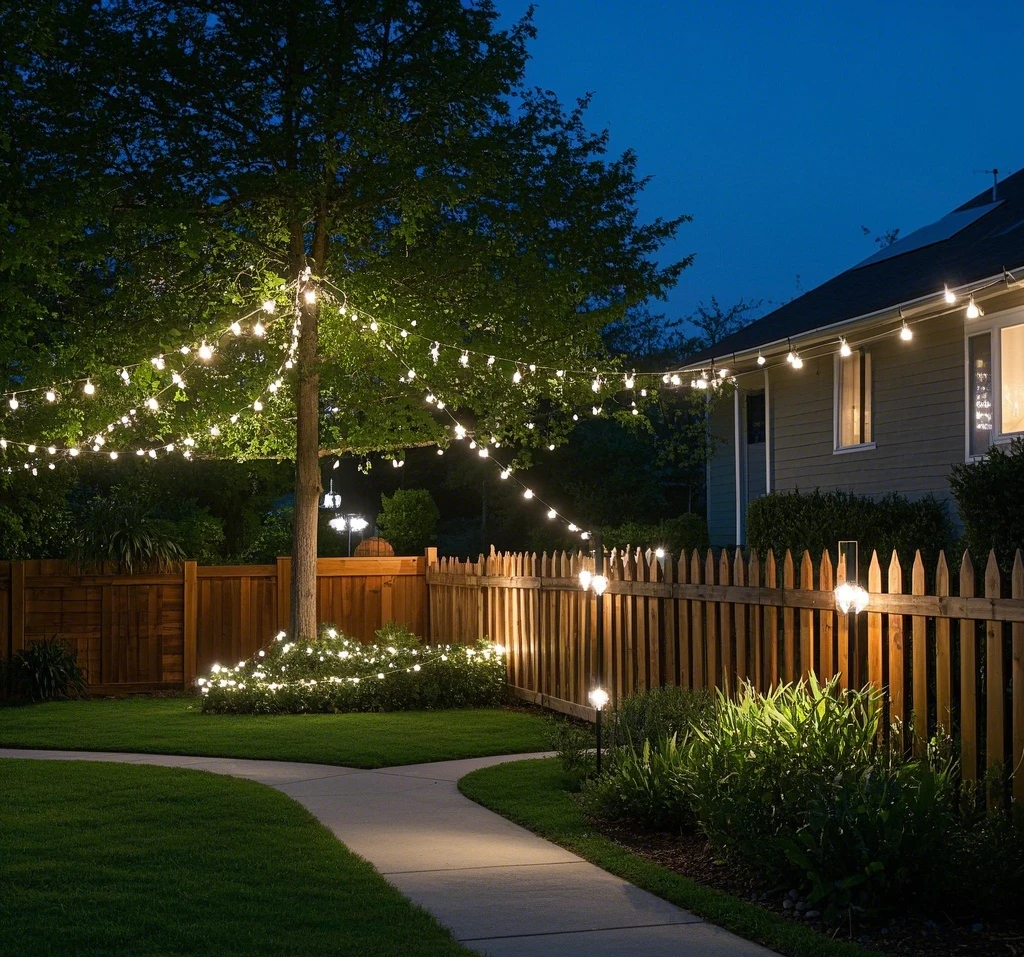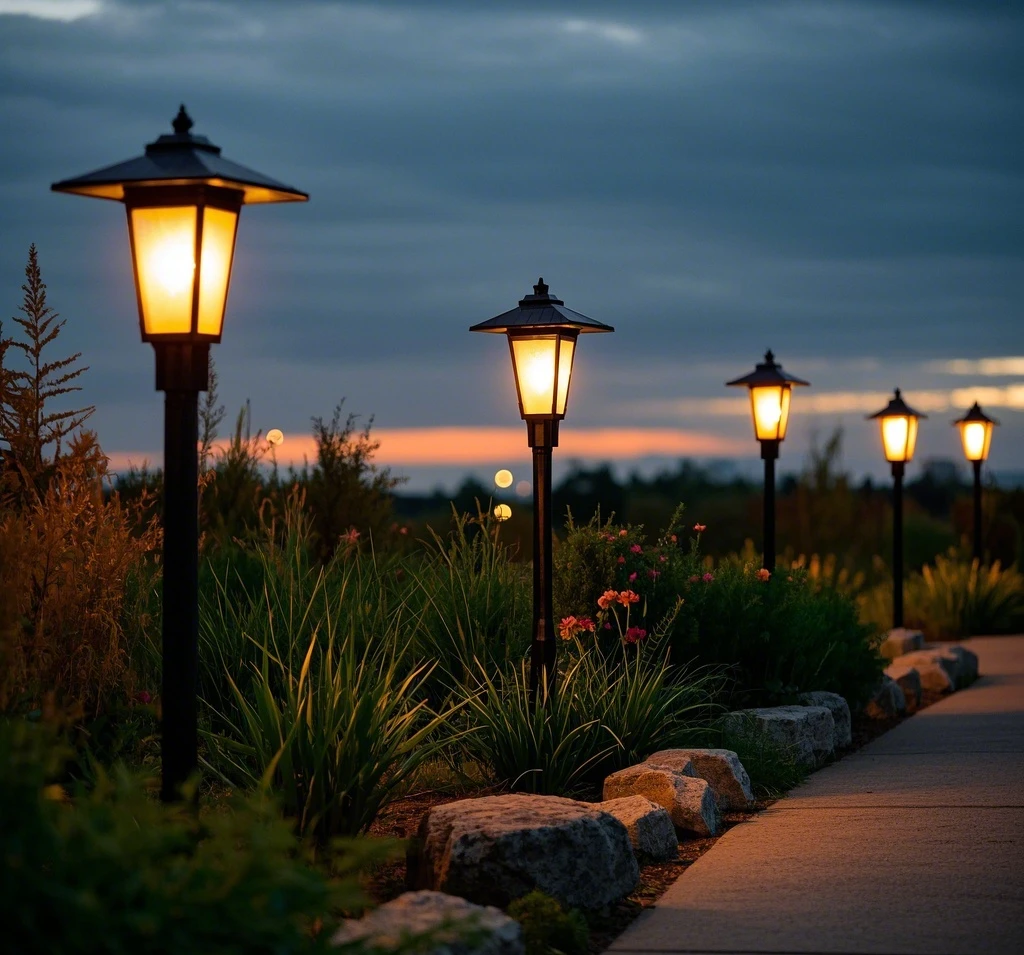A Canadian blizzard buries your solar garden lights, or a scorching California summer warps your patio lamps. Harsh weather can make you doubt the durability of solar lights, but that’s a misconception. With the right weather-resistant features, solar lamps can thrive in North America’s diverse climates—from snowy northern winters to rainy Pacific Northwest springs. As a regional home tech enthusiast, I’m here to show you how solar lamp weather resistance is the key to durability across the continent. This guide will break down how to pick solar lights that stand up to snow, sun, rain, and corrosion, ensuring your outdoor lighting shines bright no matter where you live.

Why Weather Resistance Matters for Solar Lights in North America
North America’s climates are as varied as its landscapes. Minnesota’s subzero winters freeze batteries, Arizona’s blazing sun fades lamp casings, and Seattle’s constant drizzle tests waterproofing. A poorly designed solar light might crack, fade, or short-circuit, but modern weather-resistant designs are built to handle these extremes. By matching your solar lights to your local climate, you can enjoy reliable, long-lasting illumination. Let’s explore the key technologies that make solar lamps durable and how they fit specific North American weather challenges.
Climate-Specific Weather-Resistant Technologies
Each region’s weather demands specific features to keep solar lights functional. Here’s how advanced designs tackle North America’s toughest conditions.
- Northern Winters: Freeze-Proof Materials and Batteries
In places like Montana or Ontario, temperatures can plummet to -30°C (-22°F). Standard plastic lamp bodies crack, and batteries lose efficiency in the cold. Look for solar lights with ABS plastic housings, which stay flexible and resist shattering in freezing conditions. Pair these with low-temperature lithium-ion batteries, designed to operate efficiently below -20°C. For example, a solar pathway light in Winnipeg with an ABS body and a cold-resistant battery can glow through a week-long snowstorm without failing. - Southern Heat: Sun-Proof Coatings and Heat-Tolerant Panels
Southern states like Texas or Arizona face intense heat and UV exposure, which can deform lamp casings and degrade solar panels. Choose lights with UV-resistant coatings to prevent fading or warping—think of it as sunscreen for your lamps. Additionally, high-temperature solar panels (rated for 85°C/185°F) ensure efficient energy capture even on scorching days. A solar spotlight in Phoenix with these features will stay vibrant and functional after years of desert sun. - Western Rain: Waterproofing and Sealed Joints
The Pacific Northwest, from Oregon to British Columbia, sees heavy rain and humidity. Water can seep into poorly sealed lights, causing rust or electrical failure. Opt for solar lights with an IP65 waterproof rating or higher, which means they can withstand heavy rain and splashes. Silicone-sealed joints add an extra layer of protection, keeping water out of critical components. A set of solar string lights in Seattle with IP65 rating and silicone seals will keep glowing through months of drizzle.
Solar Light Designs for Specific Uses
Different solar light types are engineered with weather-resistant features to suit their purpose. Here’s how common designs hold up in tough conditions.
- Fountain Lights: Corrosion-Resistant Stainless Steel
Water features like backyard fountains or ponds expose lights to constant moisture and mineral buildup. 316 stainless steel is the gold standard here, as it resists corrosion better than standard metals. A solar fountain light in Florida’s humid, salty air will last years without rusting if made with 316 stainless steel. - String Lights: Cold-Resistant PVC Wiring
Solar string lights are popular for patios and trees, but their wires must endure temperature swings. Cold-resistant PVC wiring stays flexible in freezing conditions, preventing cracks in places like Alberta or Maine. A 20-meter solar string light set with PVC wiring can survive a harsh winter while keeping your deck festive. - Spotlights: Wind-Proof Cast Iron Bases
Solar spotlights need stability in windy regions like the Great Plains or coastal areas. Cast iron bases provide a heavy, sturdy foundation to prevent tipping in gusts up to 50 mph. A solar spotlight in Oklahoma with a cast iron base will stay upright and operational during stormy seasons.
Busting the Myth: “Solar Lights Can’t Handle Harsh Weather”
A common worry is that solar lights are too fragile for North America’s extreme weather. The truth? Modern solar lamps are engineered for durability. For instance, a Minnesota homeowner might fear their pathway lights will crack in a -25°C deep freeze, but an ABS-bodied, low-temperature battery light will keep shining. Similarly, a Tucson resident might think the sun will melt their solar lamps, but UV-resistant coatings prevent damage. The key is choosing lights with the right weather-resistant features for your climate, not avoiding solar lighting altogether.
How to Test and Maintain Weather-Resistant Solar Lights
To ensure your solar lights last, use these practical tips to select and care for them.
- Look for UL or CE Certifications
Certifications like UL (Underwriters Laboratories) or CE (Conformité Européenne) indicate a light has been tested for weather resistance. These stamps ensure the lamp can handle extreme temperatures, moisture, and UV exposure. For example, a UL-certified solar floodlight in Michigan is guaranteed to withstand heavy snow and rain. - Store Indoors During Off-Seasons
In regions with brutal winters, like North Dakota, store solar lights indoors during months of minimal use (e.g., January–February). This protects batteries from extreme cold and extends lifespan. Simply detach the light and keep it in a garage or basement. - Clean Solar Panels Regularly
Dust, snow, or pollen can block sunlight, reducing charging efficiency by up to 25%. Wipe panels with a damp cloth monthly, especially in dusty areas like Nevada or rainy regions like Washington, to keep your lights bright.
Climate-to-Technology Compatibility Table
To simplify your shopping, here’s a table matching North American climates to the right solar light features:
| Region | Climate Challenge | Recommended Features | Example Use Case | Expected Durability |
|---|---|---|---|---|
| Northern (e.g., Minnesota, Ontario) | Snow, -30°C winters | ABS plastic, low-temp battery | Pathway lights for snowy walkways | 5–10 years |
| Southern (e.g., Arizona, Texas) | 40°C+ heat, intense UV | UV-resistant coating, high-temp solar panel | Spotlights for desert gardens | 7–12 years |
| Western (e.g., Oregon, BC) | Heavy rain, humidity | IP65 waterproofing, silicone-sealed joints | String lights for rainy patios | 6–10 years |
| Coastal (e.g., Florida, Carolinas) | Salt air, corrosion | 316 stainless steel | Fountain lights for coastal ponds | 8–15 years |
| Plains (e.g., Oklahoma, Kansas) | High winds, storms | Cast iron base, IP65 waterproofing | Spotlights for windy yards | 6–12 years |
Note: Durability assumes proper maintenance and 6–8 hours of daily sunlight for charging.
Real-World Examples: Solar Lights Across North America
Here’s how weather-resistant solar lights perform in different regions:
- Edmonton, Canada: A set of ABS plastic pathway lights with low-temperature batteries lines a snowy driveway, glowing for 8 hours nightly through -25°C winters.
- Phoenix, Arizona: UV-coated solar spotlights highlight a cactus garden, resisting 45°C heat and staying vibrant after three years of intense sun.
- Seattle, Washington: IP65-rated string lights with silicone seals drape a backyard pergola, shining through months of rain without a flicker.
- Miami, Florida: 316 stainless steel fountain lights illuminate a coastal pond, resisting corrosion from salty air for over five years.

Practical Tips for Choosing Weather-Resistant Solar Lights
To get the most out of your solar lights, consider these region-specific tips:
- Northern Homeowners: Prioritize ABS plastic and low-temperature batteries for winter durability. Check for UL certification to ensure cold resistance.
- Southern Homeowners: Choose UV-resistant coatings and high-temperature panels. Place solar panels in unshaded areas to maximize charging in intense sun.
- Western Homeowners: Opt for IP65 or higher ratings and silicone seals. Elevate lights slightly to avoid pooling water during heavy rains.
- Coastal Homeowners: Stick to 316 stainless steel for corrosion resistance. Rinse lights monthly to remove salt buildup.
- Plains Homeowners: Use cast iron bases for stability. Secure lights in sheltered spots to minimize wind exposure.
Conclusion: Match Your Solar Lights to Your Climate for Lasting Performance
Solar lamp weather resistance is the secret to durable, reliable outdoor lighting in North America’s diverse climates. Whether you’re battling Canadian snow, Arizona heat, or Pacific Northwest rain, there’s a solar light designed to thrive in your region. By choosing features like ABS plastic, UV coatings, IP65 waterproofing, or 316 stainless steel, you can ensure your lights last for years. Don’t let the myth of “fragile solar lights” hold you back—pick the right weather-resistant model for your climate, and enjoy bright, eco-friendly lighting that stands up to whatever Mother Nature throws your way. Ready to light up your home? Check your local weather, match it to the right tech, and let your solar lights shine.


Leave a Reply